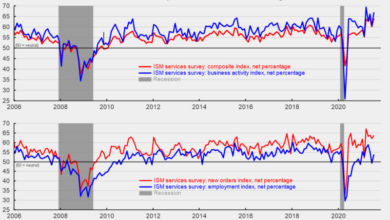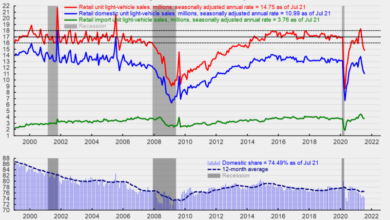Fight Covid-19 With Social Capital Not Stringency

The debate over stringency measures continues—as does the spread of Covid-19 and its variants (cases not deaths)—but few commentators and policymakers consider how social capital and its variants encourage preventative behavior.
Our dalliance with stringency measures like lockdowns and shelter-in-place orders seem to be waning—at least in the United States and, perhaps, in Malaysia. Recently, however, people living in Oman, in and around the border of Cambodia and Thailand and in Kerala, and in cities like Brisbane and Sydney, Australia have not been so lucky. The Financial Times shows how stringency measures have changed over time.
While these measures were meant to curb the spread of Covid-19, they have underperformed. Even if they lower the spread of Covid-19, it is not clear they would pass a cost-benefit test. In a review of 80 such studies, Douglas Allen argues they do not. This is especially true once we account for the marginal benefit of lockdowns given voluntary changes in preventative behavior and the marginal costs of lockdowns, i.e., the variety and magnitude of unforeseen health effects of isolation and disruptions to social and economic life.
For example, a new NBER working paper argues that for every child lockdowns saved, 1.76 children died—due to economic contractions especially in poorer areas. Similarly, rates of alcohol consumption and domestic violence have risen under lockdowns. Some studies, however, suggest substantial net benefits from lockdowns (see the two cost-benefit studies in the Feb. 4, 2021 edition of the Centre for Economic Policy Research series on Covid Economics).
Social Capital Bolsters Lockdowns
In a new working paper with Tony Carilli and Justin Isaacs, my colleagues at Hampden-Sydney College, we add to this ongoing debate by examining the role social capital plays in the spread of Covid-19 in the United States. With over a year’s worth of daily data, we argue that stringency measures have a marginally negative impact on the spread of Covid-19 cases, but this impact becomes lessened once we account for the presence of social capital (measured by the Joint Economic Committee’s Social Capital Project) and the value people have for stringency measures.
Using states with average values of social capital and stringency for comparison, we find that states with weaker social capital, lower values for prevention, and lower stringency measures experienced 60 more daily Covid-19 cases per 1,000,000 people; alternatively, states with higher social capital, higher values for prevention, and higher stringency measures experienced 81 fewer Covid-19 cases per 1,000,000 people.
Combined with other studies (see, for example, here), our results suggest that stringency measures are overvalued as a means of limiting the spread of Covid-19. This does not necessarily mean people should never impose lockdowns, but, perhaps, we should think twice before imposing them in areas with higher social capital and higher values for prevention. Furthermore, our results suggest that lockdown policies become largely ineffective in areas with weak social capital.
The Double-Edged Sword of Social Capital
Despite this bolstering effect, social capital plays a more nuanced role in the spread of Covid-19. Let’s unpack what social capital is and how it influences behaviors related to Covid-19.
Throughout the 20th century social capital has been one of the most studied phenomena in social science literature—it is a way to represent the bonds of trust and the social norms that form between people in and out of their families and social groups. This kind of capital usually encourages private agreement and contracting—as Robert Putnam famously argued in Bowling Alone—but it also influences private and public health outcomes (see here and here). Indeed, social capital also influences the spread of infectious diseases like influenza; for example, areas with higher social capital observed higher rates of vaccination during the H1N1 epidemic.
There are two main ways social capital might influence health and the spread of Covid-19. First, social capital inescapably encourages human interaction. In order to do the things people do within a community and to build social capital they have to communicate with others and deepen relationships with family, friends, and business associates. Such communication and relationship building often takes place in close quarters. Unfortunately, these interactions come with a higher probability of spreading infectious diseases like Covid-19. Much of the existing literature on Covid-19 and social capital focuses on this effect, and our results corroborate these findings.
Second, social capital has a reinforcing effect whereby people are more likely to monitor and enforce the rules they value. Whatever those rules happen to require or address, people are more likely to follow them in communities with stronger levels of social capital. Thus, social capital can encourage or discourage preventative behavior depending on the values people have and the rules their communities uphold. People might value face-to-face conversations; they might value religious ceremonies; they might value maintaining other cultural practices. Similarly, people might value living a healthy life, avoiding infectious diseases, and protecting friends, family, and others from disease. Thus, if communities have stronger levels of social capital, their preventative behavior depends on the value they have for prevention relative to other legitimate goals they might pursue.
In recognition of these effects, we argue that the reinforcing effect lowers the spread of Covid-19 and outweighs the physical effect. This is especially in areas with stronger levels of social capital and higher values for Covid-19 prevention and stringency measures. Thus, people in these areas are more likely to engage in preventative behavior, e.g., wear face masks, engage in socially distant behaviors, take vaccines, etc.
Spreading and Preventing Covid-19 Together
While Covid-19 and its variants are reaching endemic status, people and their communities can play an active role in limiting its spread by bolstering their social capital. This seems easier said than done; how do we encourage social capitalists?
To be sure, this is not an easy task. At the end of his 2000 book, for example, Robert Putnam details some ways to start thinking about encouraging social capital. Interestingly, Putnam suggests a national crisis would help; however, national crises lead to a larger size and scope of government (see, here and here), which often stifles individual, private, and community-led responses. Our work suggests we can build or enhance social capital and fight Covid-19 by resuming normal social and economic activities, not by imposing additional lockdowns.
The post Fight Covid-19 With Social Capital Not Stringency was first published by the American Institute for Economic Research (AIER), and is republished here with permission. Please support their efforts.



